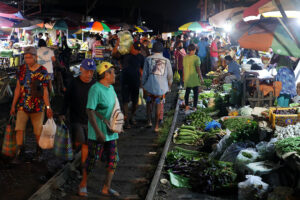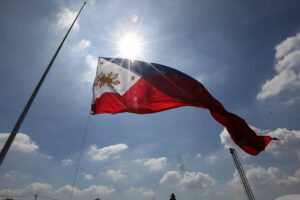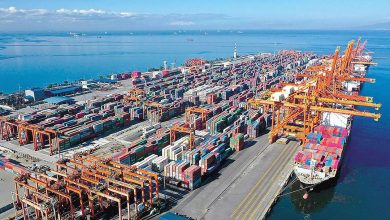Inflation likely eased to 5.5% — poll

By Keisha B. Ta-asan, Reporter
HEADLINE INFLATION likely further slowed for a fifth straight month in June, due to stable food prices and high base effects, analysts said.
A BusinessWorld poll of 17 analysts yielded a median estimate of 5.5% for June inflation, within the 5.3% to 6.1% forecast given by the Bangko Sentral ng Pilipinas (BSP) last Friday.
If realized, the median estimate will be slower than the 6.1% print in May 2023 and June 2022. It would also be the slowest since the 5.4% in May 2022.
June would mark the fifth consecutive month of slower inflation, and the 15th straight month that inflation surpassed the BSP’s 2-4% target range.
The Philippine Statistics Authority (PSA) will report the consumer price index (CPI) data for June on July 5 (Wednesday).
Standard Chartered Bank economist Jonathan Koh said food and transport inflation may have moderated further in June due to base effects last year.
“Meat and fruit prices have continued to ease in June, while vegetable prices rose in June. Transport prices likely contracted year on year for the second consecutive month on high base effects,” he said in an e-mail.
In June 2022, food inflation rose to 6.4%, while transport inflation accelerated 17.1% year on year.
China Banking Corp. Chief Economist Domini S. Velasquez said inflation likely further slowed in June as prices of key food items such as meat, fish and fruits, as well as cooking gas, declined.
Fuel retailers slashed their cooking gas prices by P3.47 per liter to P6.20 per kilogram in June.
“We expect inflation to settle at 5.4% in June, as high base last year pulled down the annual figure. Although sequential growth likely picked up, it is still well below the trend seen last year. We estimate the downtrend was broad-based with both fuel and nonfuel inflation slowing,” Makoto Tsuchiya, assistant economist at Oxford Economics, said in an e-mail.
While fuel prices may have gone up month on month, Mr. Tsuchiya noted prices are much lower compared with the level a year ago.
In June alone, pump price adjustments stood at a net increase of P0.45 per liter for gasoline, P1.7 per liter for diesel, and P1.6 per liter for kerosene.
“We also observed upward pressures from increases in vegetable and domestic pump prices as well as higher electricity rates of Manila Electric Co. (Meralco) and other regional power distributors. Rice prices have also been consistently rising since February,” Ms. Velasquez said.
Meralco raised the overall rate for a typical household in Metro Manila by P0.4183 to P11.9112 per kilowatt-hour (kWh) in June.
OUTLOOKAnalysts said headline inflation is largely expected to further ease to the 2-4% target range before the year ends.
However, upside risks to the inflation outlook includes the El Niño weather event and the minimum wage hike.
“Moving forward, we expect that the monthly print of the year-on-year consumer price growth will fall below 4% in the fourth quarter of 2023. The main risk against this view is El Niño,” Philippine National Bank economist Alvin Joseph A. Arogo said in an e-mail.
The local weather agency said the El Niño weather pattern may emerge in the next three months with an 80% probability and will likely persist until the first quarter of 2024.
The El Niño is a fluctuating weather pattern in the area around the equator in the Pacific. The last time an El Niño weather event hit the Philippines was in 2019, with agricultural damage reaching up to P8 billion.
ING Bank N.V. Manila Senior Economist Nicholas Antonio T. Mapa said El Niño threatens to affect agricultural output.
“A below-average performance from the agricultural sector will impact the manufacturing sector given the sizable contribution delivered by manufacture of agri-based products,” he said in an e-mail.
For HSBC economist for ASEAN (Association of Southeast Asian Nations) Aris Dacanay, El Niño remains an upside risk.
“Nonetheless, it remains a risk and not a guarantee that inflation will rise. History shows that policy interventions in the Philippines have been successful in mitigating the impact of El Niño on food prices,” Mr. Dacanay said in an e-mail.
Ms. Velasquez said inflation may average 5.6% in 2023, above the BSP’s 5.4% forecast.
However, she noted the recent minimum wage hike in Metro Manila has become a key risk in the inflation outlook.
“A similar increase in the minimum wage in other regions could push up annual inflation by 0.1 percentage point to 5.7% this year. We also expect the impact of the higher minimum wage to be more pronounced in 2024 but lower-than-target inflation projection will likely soften the blow,” she said.
On Friday, the regional wage board in the National Capital Region (NCR) approved a P40 increase in the minimum wage to P610 a day for non-agriculture workers, effective July 16.
The Labor department said around 1.1 million minimum wage workers in NCR will benefit from the increase.
“As to the NCR wage hike, we estimate the impact of the hike to represent an upside risk to both inflation and the policy rate outlook; a policy hike may help offset the inflationary tendency of the wage adjustments and thus the odds of an August policy action have gone up,” Security Bank Corp. Chief Economist Robert Dan J. Roces said.
The Monetary Board has extended its policy pause for a second straight meeting in June, keeping the benchmark rate at a near 16-year high of 6.25%.
Also, Ms. Velasquez said higher toll fees in some expressways may affect food prices as transport costs will likely increase.
Mr. Koh noted that inflation will likely continue to moderate in the second half of the year.
“This should allow the central bank to maintain its pause through third quarter and potentially begin cutting rates in fourth quarter,” he said.
Outgoing BSP Governor Felipe M. Medalla earlier said the BSP may keep rates on hold until third quarter this year and ruled out a rate cut this year due to uncertainty over future policy moves by the US Federal Reserve.
The BSP sees inflation settling within the 2-4% target by September or October, and averaging at 5.4% this year, before further slowing down to 2.9% in 2024.
“With inflation firmly on a decline, we think that the BSP will continue to stand pat even if the Fed decides to raise rates further,” Ms. Velasquez said.
The Fed paused its tightening at its June meeting but signaled it may still raise borrowing costs this year.
“However, there is still a chance that the BSP may be forced to resume hiking if the peso depreciates excessively — which is inflationary — from a narrower interest rate differential with the Fed,” Ms. Velasquez added.
The peso closed at a near three-month high of P55.20 versus the dollar on Friday, strengthening by 10 centavos from its previous finish, data from the Bankers Association of the Philippines’ website showed.
The Monetary Board’s next policy meeting is on Aug. 17.




